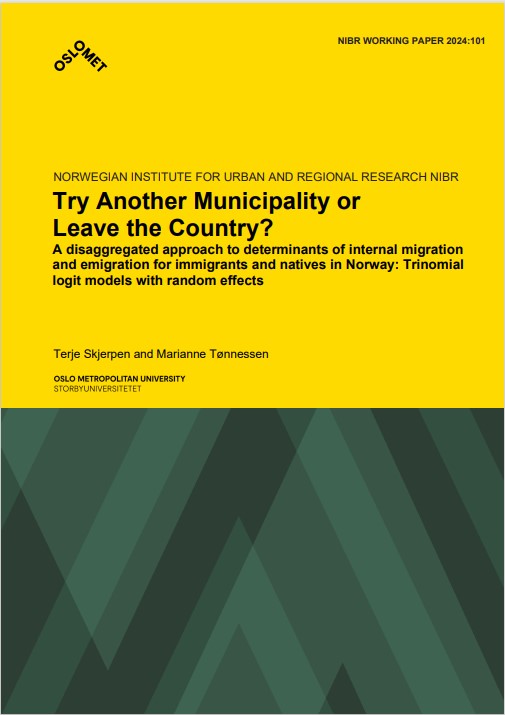
Try another municipality, or leave the country?
When moving from their municipality, some people emigrate whereas others choose another municipality within Norway. In this Working Paper, we explore how these patterns differ between immigrants and natives in rural and urban parts of Norway, using a trinomial logit model with random effects and a full-population panel data set. Our results show that immigrants are generally more mobile than natives, both within and out of Norway. The propensity to move abroad is lower than the propensity to move to another Norwegian municipality, also for most immigrants – but exceptions exist, for instance for single immigrants aged 35 in the Oslo area without a job. Read the working paper here (in English).
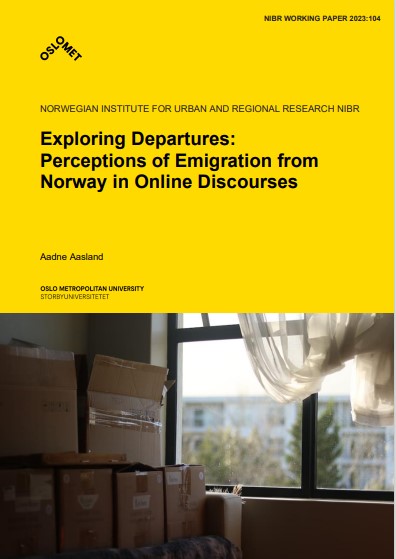
Social media perceptions on why people leave Norway
Why do around 30,000 persons annually leave Norway, a country often portrayed as ‘one of the happiest countries in the world’? A new report analyzes experiences and perceptions about factors that motivate emigration from Norway. The data sources are mainly comments to an online article about the EXITNORWAY project, supplemented with data from emails sent to the project leader. In the report, eight key factors explaining migration from Norway are identified. Economic considerations as well as Norwegian culture and lifestyle are highlighted as particularly important reasons for emigration. Read the report here (in Norwegian).
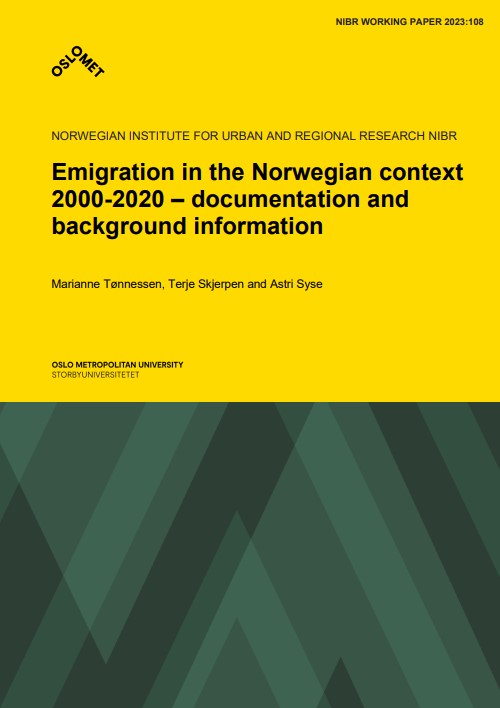
Documentation and background info in one place – and in English
The EXITNORWAY team has published a report which summarizes information relevant for statistical analyses and research on emigration from Norway in recent times. Much of this information has so far been available in Norwegian only and/or from multiple and separate sources. The report presents an overview of emigration in a Norwegian context with a focus on the data needed to understand this phenomenon, and it compiles much existing Norwegian information so it can also reach an English-speaking audience. Read the report here (English).
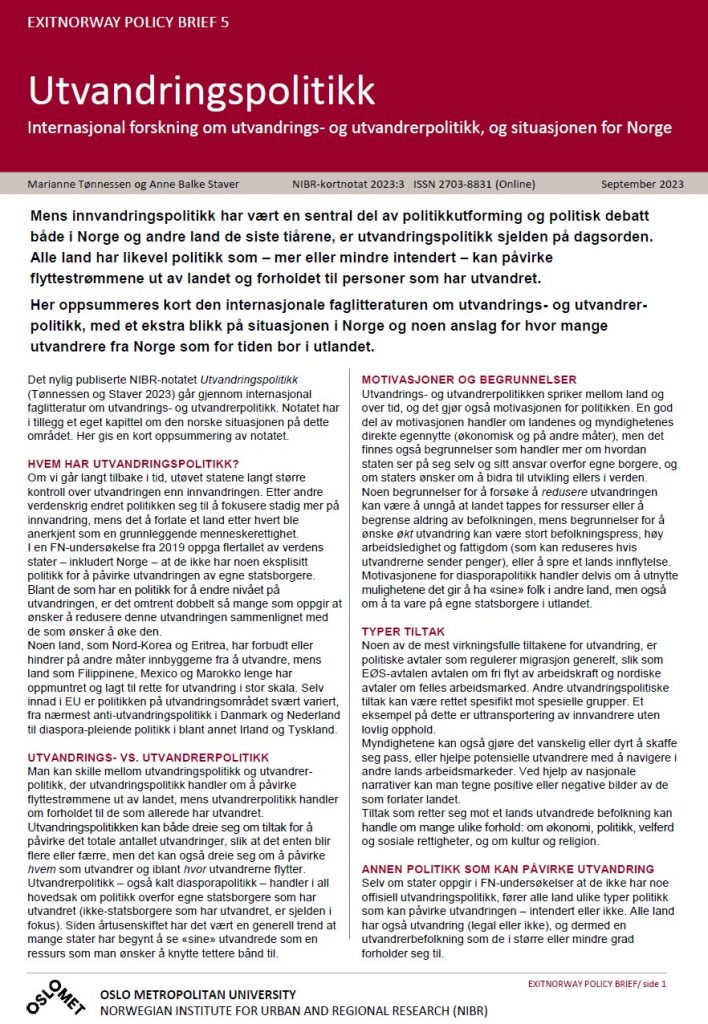
Policy brief about emigration policy
The policy brief Utvandringspolitikk (in Norwegian) is based on the report below, and discusses briefly which countries have emigration policies, the aims of these policies, as well as different types of political measures. It also briefly discusses emigration policies in the Norwegian context. Read the policy brief here (in Norwegian)
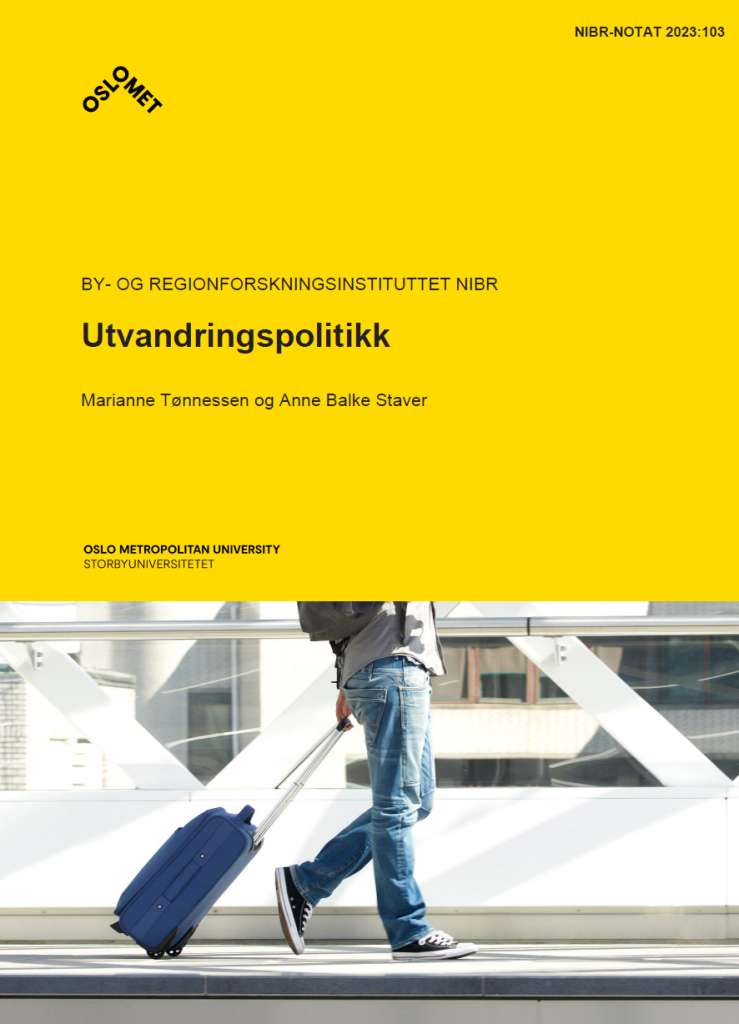
Report on emigration policy
The report Utvandringspolitikk (in Norwegian) goes through international research literature on emigration policy. It shows how migration policies changed around the second world war from focusing on emigration to focusing on immigration around, it discusses distinctions between emigration policy and emigrant (diaspora) policy, and gives an overview of motivations for such policies. A separate chapter discusses Norwegian policies in this fields, and presents some estimates of the number of emigrants from Norway currently living abroad. Read the report here (in Norwegian)
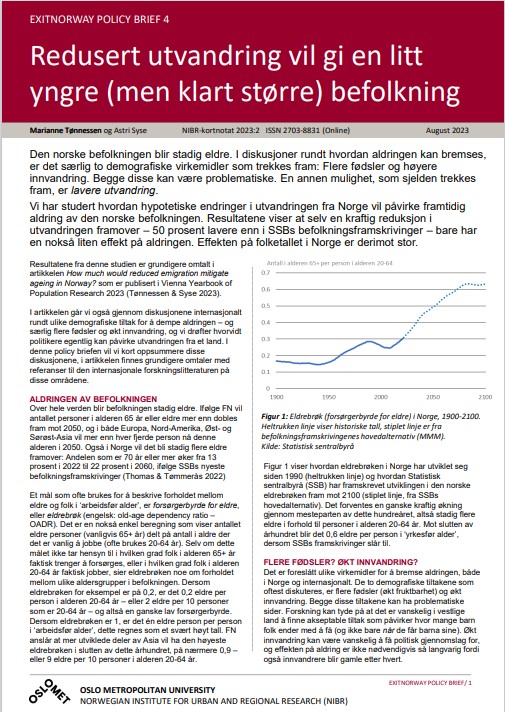
Policy brief about how emigration affects population ageing
The policy brief Redusert utvandring vil gi en litt yngre (men klart større) befolkning (in Norwegian) is based on the paper below, and shows how reduced emigration would affect the future population size and ageing in Norway. It also discusses the extent to which reduced emigration could be a ‘solution’ to the Norwegian ageing challenges. Read the policy brief here (in Norwegian)
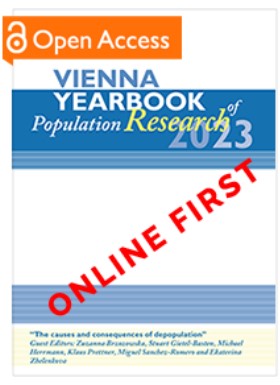
Changed emigration as an anti-ageing formula
Population ageing is a topic of great concern in many countries, but changed emigration is rarely mentioned as a possible remedy against ageing. In this paper we explore what effect different scenarios of reduced emigration would have on future population ageing in Norway, and discuss the realism of these scenarios. The paper is published in Vienna Yearbook of Population Research 2023 and can be read here (in English).
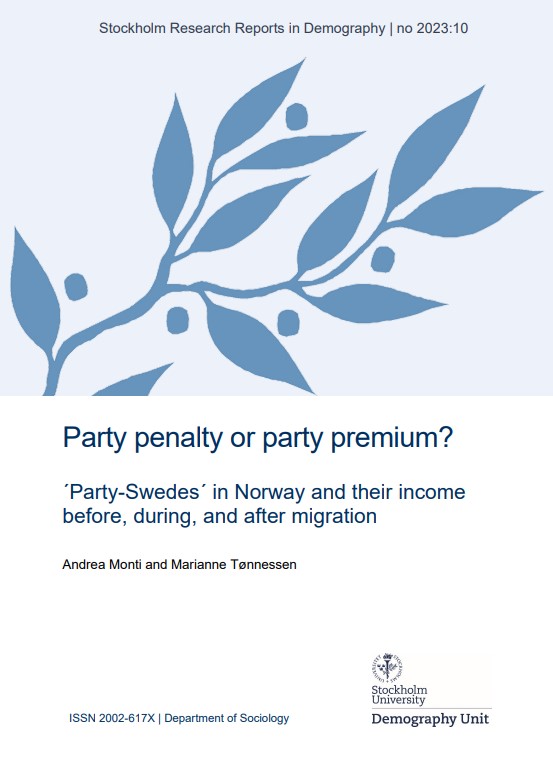
‘Party-Swedes’ before, during and after their stay in Norway
Young adults crossing borders between wealthy countries for work and adventure is an under-studied group of international migrants. We use a unique combination of register data from Sweden and Norway to follow the so called ‘Party-Swedes’ – young people emigrating from Sweden in 2010-12 to work in Norway – and their median income before leaving Sweden, during their stay in Norway and after possible return to Sweden. In economic terms, the ‘party penalty’ seems clearly larger than the ‘party premium’. This work has been submitted for peer-reviewed publishing, but can already now be read as a Stockholm Research Report in Demography.
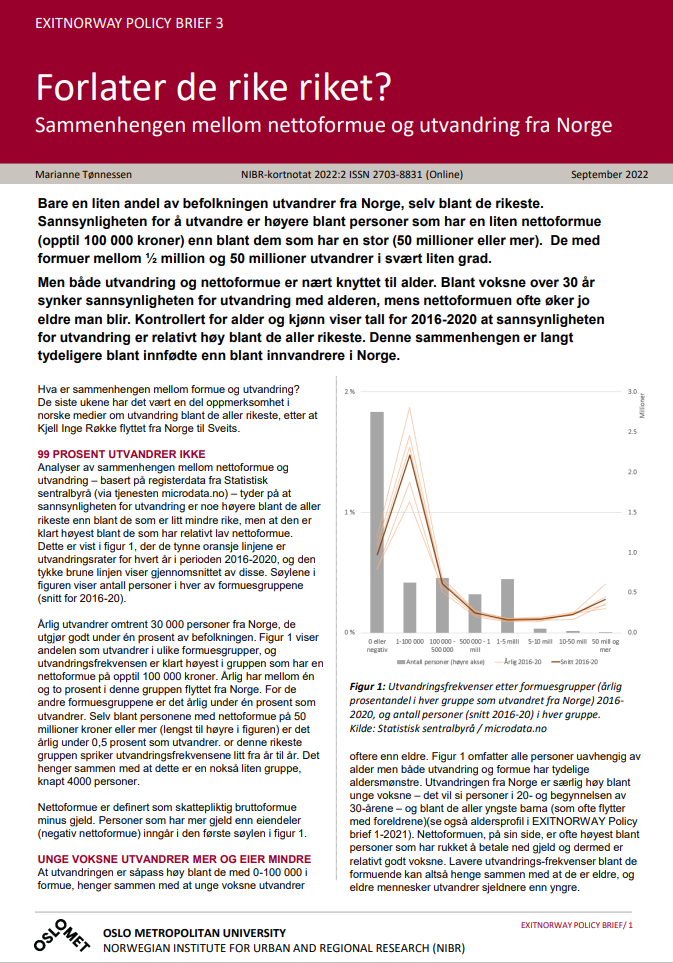
Policy brief on emigration among Norway’s wealthiest
Emigration among the wealthiest has been a topic in the Norwegian public debate, and this new EXITNORWAY policy brief examines emigration among people in different wealth groups. The results show that 1) most people do not emigrate, even among the wealthiest, 2) emigration propensities are somewhat higher among people with very high net wealth (NOK 50 mill or more) compared to them with somewhat lower wealth, and 3) this relationship is less clear among immigrants than for natives. The policy brief can be read here (in Norwegian)
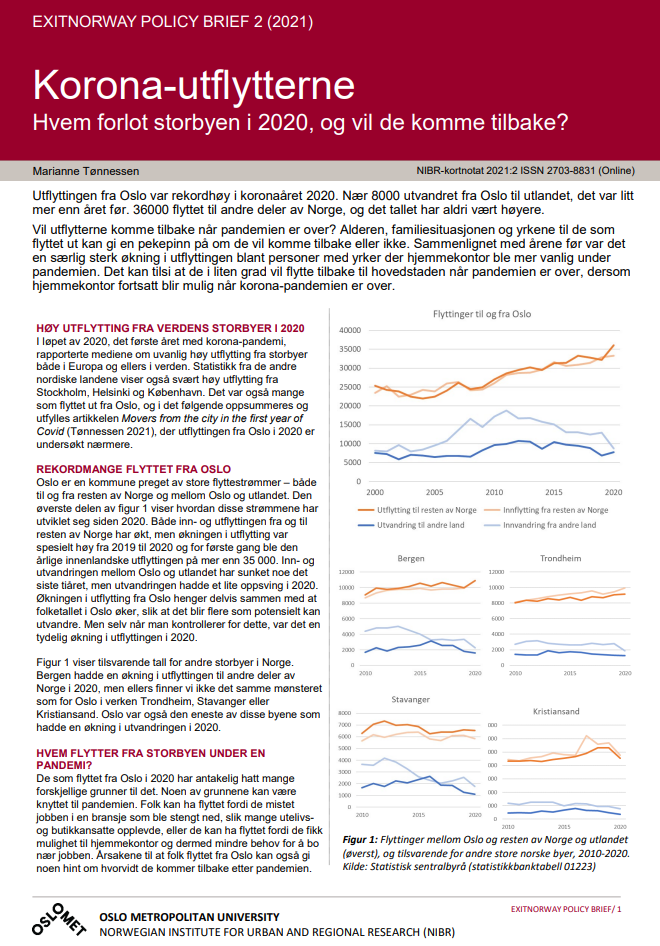
Policy brief on the out-movers from Oslo in 2020
The policy brief Korona-utflytterne. Hvem forlot storbyen i 2020, og vil de komme tilbake? (in Norwegian) is based on the paper below, and shows characteristics of out-movers from Oslo in 2020 which may indicate whether the movers will come back after the pandemic. It also adds some more results on topics such as the emigration of Swedes from Oslo. Read the policy brief here (in Norwegian)
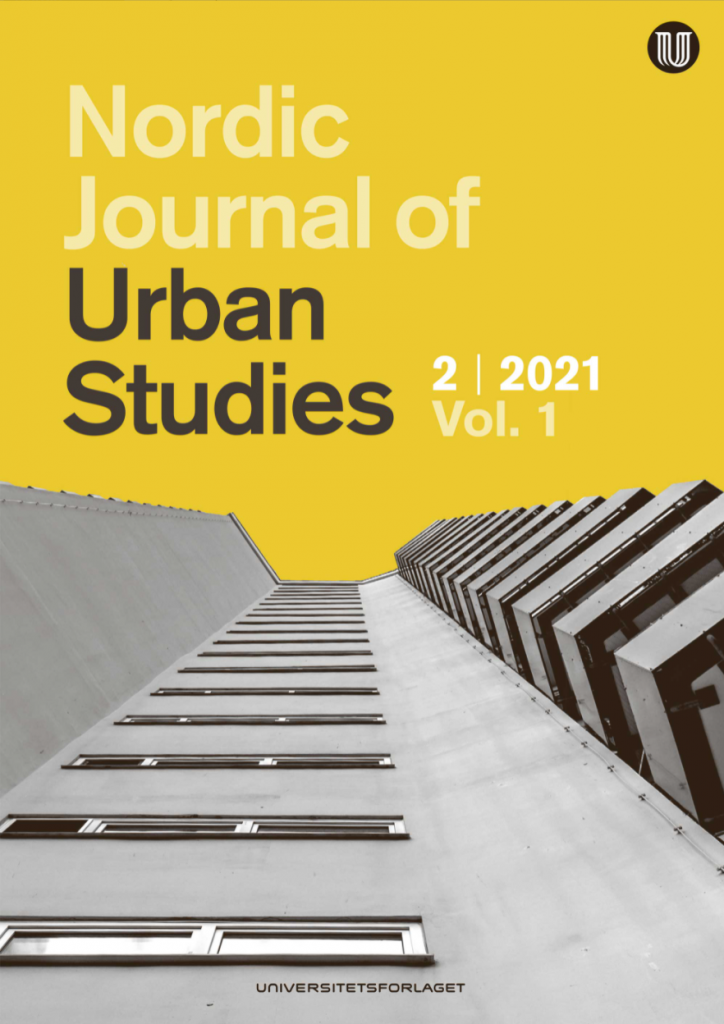
Movers from the city in the first year of Covid (Nordic Journal of Urban Studies 2021)
Out-migration was high from many cities across the world in 2020. Some moved abroad, some moved to other parts of the country. In the paper Movers from the city in the first year of Covid, EXITNORWAY researcher Marianne Tønnessen examines the characteristics of those who moved away from Oslo in 2020. To a greater extent than in the preceding years, movers in 2020 had jobs where teleworking could be possible. For those who emigrated to another country, no teleworking effect was found. Read the paper here (in English)
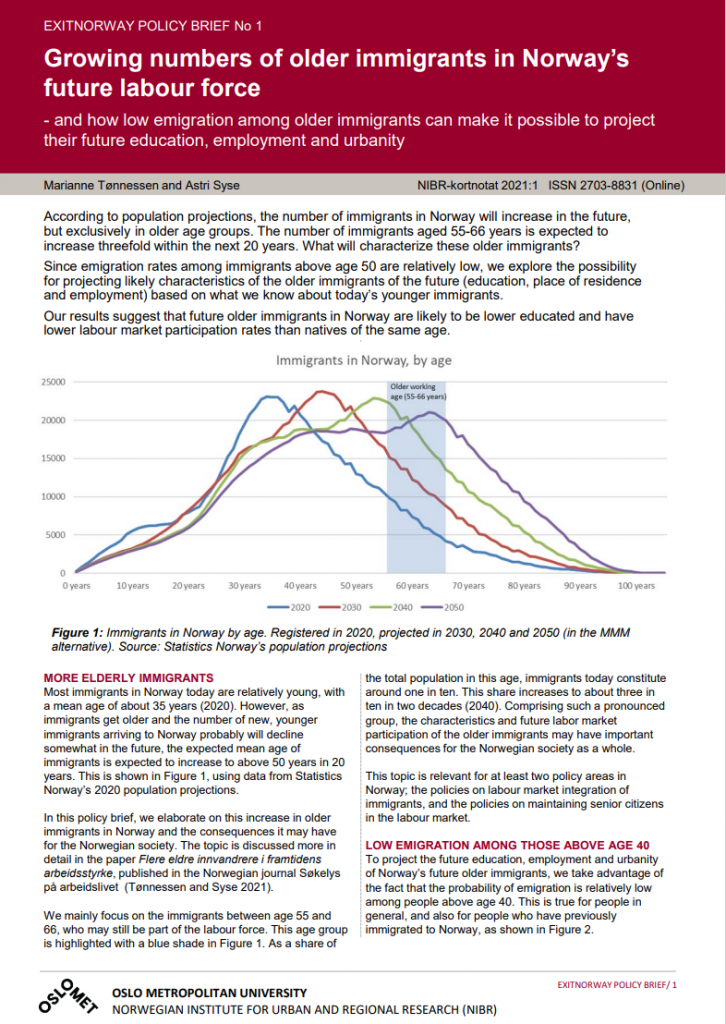
Policy brief on emigration and the future older immigrants in Norway’s labour force
The policy brief Growing numbers of older immigrants in Norway’s future labour force and how low emigration among older immigrants can make it possible to project their future education, employment and urbanity shows how low emigration in older age groups makes it possible to project likely characteristics of the older immigrants in Norway’s future labour force, based on what we know about today’s younger and older immigrants’ education, place of residence and employment. Read the policy brief here (in English)
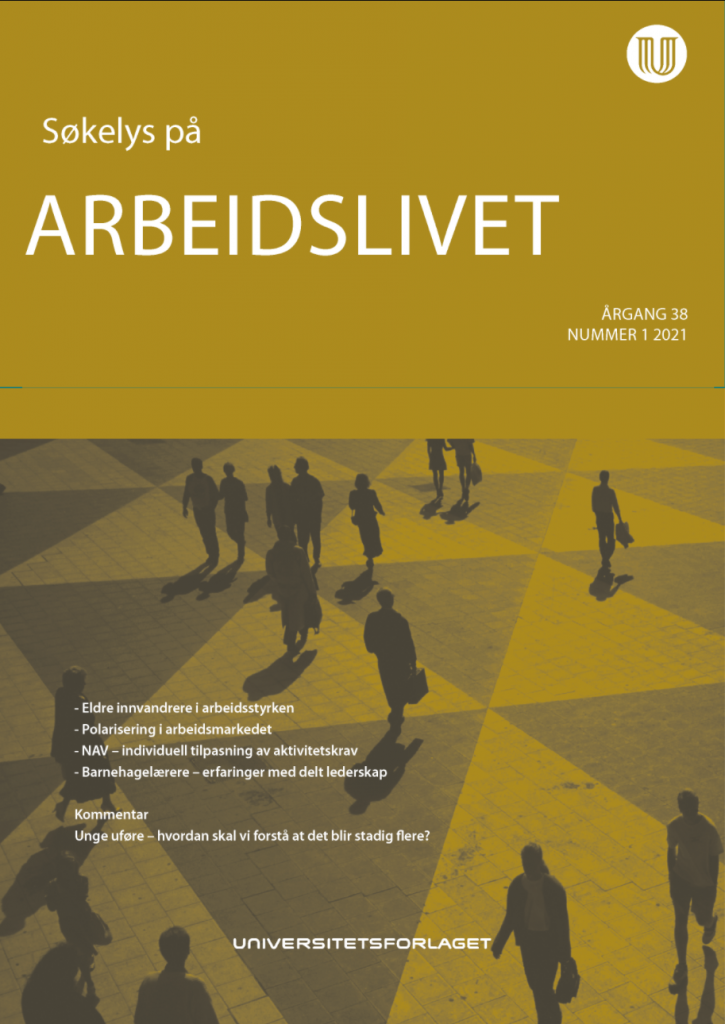
Flere eldre innvandrere i framtidens arbeidsstyrke (Søkelys på arbeidslivet 2021)
In the paper Flere eldre innvandrere i framtidens arbeidsstyrke EXITNORWAY’s researchers Astri Syse and Marianne Tønnessen show how low emigration in older age groups makes it possible to project likely characteristics of Norway’s future older immigrants (e.g. origin, length of stay, gender, education, place of residence and employment) and discusses potential labour market implications and societal consequences. Read the paper here (in Norwegian)